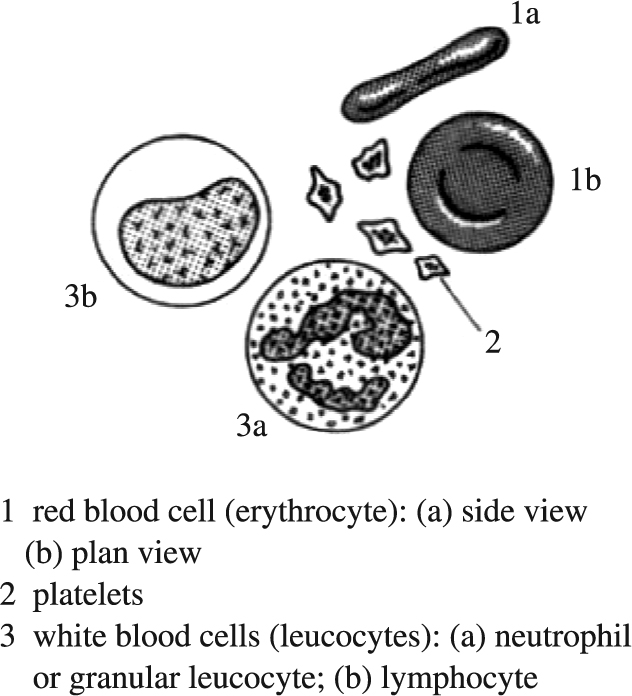Cells suspended in plasma which circulate through blood vessels, carrying oxygen and nutrients to the organs and removing carbon dioxide and other waste products for excretion. In addition, it is the vehicle by which hormones reach their sites of action.
The cells are red cells or corpuscles (ERYTHROCYTES), white cells (LEUCOCYTES and LYMPHOCYTES), and platelets.
Red cells (erythrocytes) are biconcave discs with a diameter of 7.5μm produced by the bone marrow and having a life span of about 120 days. They contain HAEMOGLOBIN – an iron-containing porphyrin compound, which takes up oxygen in the lungs and releases it to the TISSUES OF THE BODY.
White cells (leucocytes) are of various types, named according to their appearance, produced by the bone marrow and lymphoid tissue. They can leave the circulation to wander through the tissues. They are involved in combating infection, wound healing, and rejection of invading foreign bodies such as bacteria. Pus consists of the bodies of dead white cells.

Red and white blood cells and platelets.
Platelets are the smallest cellular components and play an important role in blood clotting (see COAGULATION).
Erythrocytes are produced by the bone marrow in adults and have a lifespan of about 120 days. White cells are produced by the bone marrow and lymphoid tissue. Plasma consists of water, ELECTROLYTES and plasma proteins; it comprises 48–58 per cent of blood volume. Plasma proteins are produced mainly by the liver and by certain types of white cells. Blood volume and electrolyte composition are closely regulated by complex mechanisms involving the KIDNEYS, ADRENAL GLANDS and HYPOTHALAMUS.